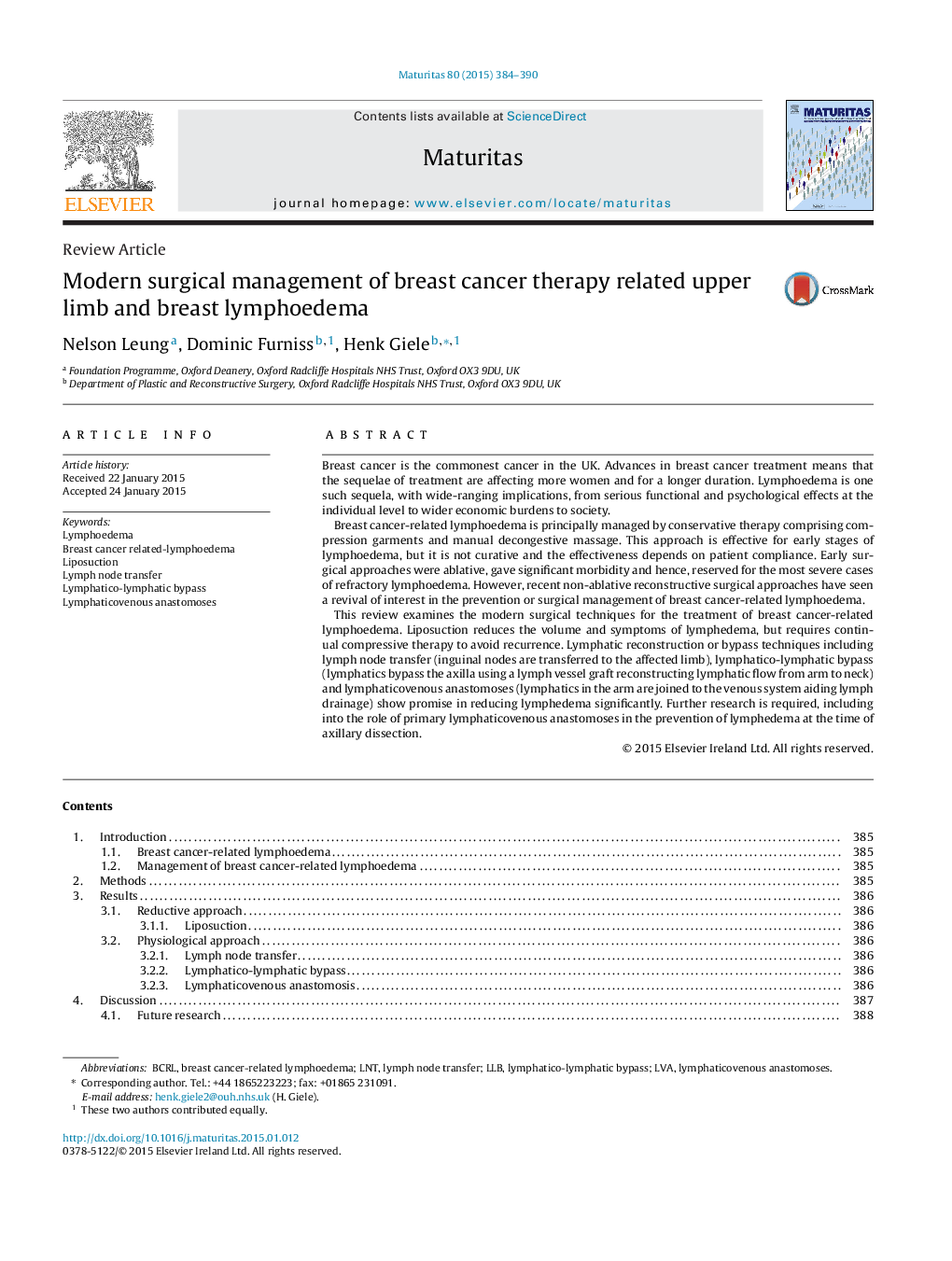| Article ID | Journal | Published Year | Pages | File Type |
|---|---|---|---|---|
| 8284537 | Maturitas | 2015 | 7 Pages |
Abstract
This review examines the modern surgical techniques for the treatment of breast cancer-related lymphoedema. Liposuction reduces the volume and symptoms of lymphedema, but requires continual compressive therapy to avoid recurrence. Lymphatic reconstruction or bypass techniques including lymph node transfer (inguinal nodes are transferred to the affected limb), lymphatico-lymphatic bypass (lymphatics bypass the axilla using a lymph vessel graft reconstructing lymphatic flow from arm to neck) and lymphaticovenous anastomoses (lymphatics in the arm are joined to the venous system aiding lymph drainage) show promise in reducing lymphedema significantly. Further research is required, including into the role of primary lymphaticovenous anastomoses in the prevention of lymphedema at the time of axillary dissection.
Related Topics
Life Sciences
Biochemistry, Genetics and Molecular Biology
Ageing
Authors
Nelson Leung, Dominic Furniss, Henk Giele,
